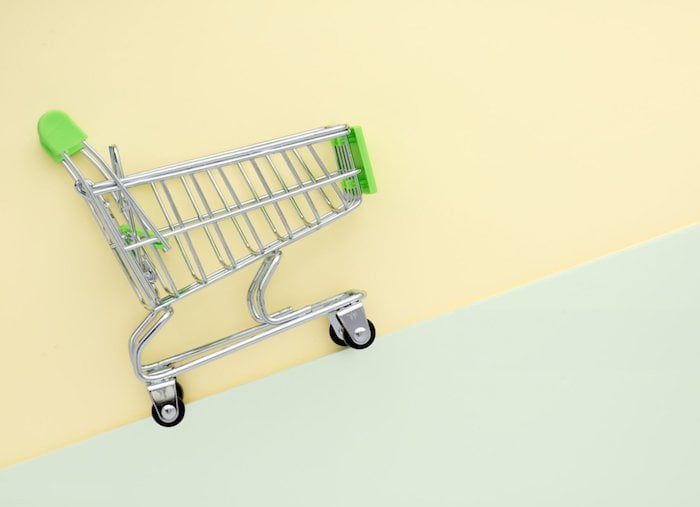10 Critical Google Merchant Center Mistakes to Avoid
As an ecommerce merchant, you’re probably aware of the benefits of using Google Merchant Center to manage your product data and showcase your offerings on Google services (namely, Google Shopping). However, with so many features and settings available, it’s easy to fall into common traps that can harm your sales and visibility.
Don’t fret! In this article, we’ll discuss ten common mistakes made with Merchant Center, so you can avoid costly errors and optimize your results.
Content
- Google Merchant Center tips for beginners
- Google Merchant Center mistakes to avoid
- Google Merchant Center optimization: a real-world example
Google Merchant Center: What to know before you start
Before we delve into the specifics of optimizing your Google Merchant Center feed, it’s important to understand at a high level the benefits of feed optimization. By improving your feed, you can enhance query matching, increase click-through rate (CTR), and drive more conversions.
Getting your products live is the first step in feed optimization. It means ensuring that your product feed meets all the requirements set by Google and that all your products are approved and visible in your Merchant Center account. To ensure your products go live and stay live, it’s crucial to follow Google Shopping guidelines. This will prevent your products from being disapproved and, even worse, your account from being suspended.
The next step after ensuring that you follow Google’s policies is to ensure that your products are shown on the right queries. This involves optimizing your product titles, descriptions, and other attributes to ensure that they contain the right keywords and are relevant to the search queries that users are entering.
The final step for feed optimization involves maximizing the performance of your products. This means ensuring that your product images are high-quality and that your prices are competitive. You should also regularly review and update your product information to ensure that it remains accurate and up-to-date.

💡 Looking for more ways to maximize your Google Shopping Ads? Get an instant account optimization report with our free Google Ads Grader!
10 Google Merchant Center mistakes to avoid
Let’s dive deeper into the details of Merchant Center health and feed optimization, taking a more granular approach.
1. Using irrelevant or inaccurate product categories
Product categories are critical for organizing your products and matching them to user queries. However, many merchants make the mistake of selecting inappropriate or inaccurate categories, which can confuse customers and hurt their visibility.
For example, if you sell a shirt, you should select “Apparel & Accessories > Clothing > Shirts & Tops” instead of “Home & Garden > Furniture > Chairs.” You should also avoid using custom categories or creating duplicate categories, as they can create inconsistencies and confusion.
2. De-optimized product titles
Crafting titles with relevant keywords and essential information can significantly improve your product’s visibility and click-through rate. Titles play a critical role in matching search queries with relevant products. To optimize your titles, consider including details such as brand, gender, product type, and attributes (such as color and size) that align with your business goals, such as customer acquisition or brand awareness. By optimizing your titles, you can improve impressions and ranking, leading to better performance. It’s recommended to experiment with different strategies and choose the most rewarding one for your business.
Improving the visibility of your brand in your titles is very important to highlight in this section. If you notice a high search volume for your brand, consider adding it to the beginning of your title. On the other hand, if the search volume for your brand is low, you may want to remove it or add it to the end of the title. Experiment with different approaches and see what works best for your business.

3. Forgetting about your descriptions
To optimize the quality, triggering, ranking, and visibility of Shopping Ads, it’s important to provide adequate product information through rich descriptions. When your descriptions are both keyword-rich and meaningful to users, they are more likely to be displayed in search results during relevant queries.
To achieve this, I suggest submitting descriptions that are between 500 and 5000 characters in length. However, it’s worth noting that currently, the majority of items within the typical advertiser’s Google Merchant Center have descriptions that are less than 500 characters.
4. Using low-quality or mismatched images
Product images are essential for showcasing your products and attracting customers’ attention. However, using low-quality or mismatched images can hurt your credibility, click-through rates, and conversions. To avoid this mistake, you should use high-resolution images that accurately represent your products and match your website’s style and branding. You should also use consistent image sizes and aspect ratios, and avoid adding watermarks, promotional text, or other distractions.


5. Neglecting mobile optimization
With the increasing use of mobile devices for online shopping, it’s crucial to optimize your product data and website for mobile users. However, many merchants neglect this aspect and miss out on valuable traffic and conversions.
To avoid this mistake, you should ensure that your product data is mobile-friendly and displays correctly on smaller screens. You should also optimize your website for mobile speed and usability, such as using responsive design, optimizing images, and reducing page load time.
6. Overusing promotional text and special characters
While it’s important to highlight your products’ unique features and benefits, overusing promotional text and special characters can be counterproductive. Google may consider them spammy or misleading, and customers may find them annoying or confusing.
To avoid this mistake, you should use promotional text and special characters sparingly and strategically, such as in your product titles or descriptions. You should also follow Google’s guidelines and avoid using all caps, exclamation points, emojis, or other symbols excessively.

7. Ignoring feed errors and warnings
One of the most common mistakes that merchants make with Merchant Center is ignoring feed errors and warnings. Merchant Center uses a feed to retrieve and update your product data, and any errors or warnings in your feed can prevent your products from showing or cause inaccuracies or disapprovals. However, many merchants don’t monitor or fix their feed errors and warnings regularly or thoroughly, which can hurt their performance and customer experience.
To avoid this mistake, you should check your feed regularly for any errors or warnings, and use the diagnostic and feed rules features in Merchant Center to identify and fix any issues. You should also ensure that your feed complies with Google’s requirements and policies, such as data quality, product identifiers, and country-specific regulations.
Finally, you should monitor your feed health and performance regularly and set up alerts or notifications for any critical issues. By taking care of your feed errors and warnings, you can ensure that your products are visible, accurate, and compliant, and you’re avoiding any unnecessary delays or penalties.

8. Not using custom labels
Custom labels are a powerful feature in Google Merchant Center that allows you to group your products based on specific criteria such as margin, seasonality, popularity, or product type. This can help you optimize your bidding, reporting, and segmentation strategies, and tailor your promotions and ad copy to different audiences. However, many merchants overlook this feature or use it inconsistently, which can limit their flexibility and insights.
To avoid this mistake, you should identify the most relevant and useful custom labels for your business and use them consistently and strategically. In the example below, the merchant is leveraging custom labels to differentiate between various sizes of items for distinct ad group segmentation. Additionally, they have implemented the ‘shipping-label’ to signify varying shipping charges that are applied to each group of item sizes.

9. Using vague or generic product identifiers
To begin with, let’s understand the significance of GTIN. A Global Trade Item Number, commonly known as GTIN, is a 14-digit unique code assigned to products (alternatively, EAN or ISBN are also valid options). It is mandatory for all products with an assigned GTIN. Failing to provide accurate GTIN information can cause frequent issues in feeds, but fortunately, they are relatively simple to resolve. By ensuring that GTINs are updated and correct, working with feeds becomes more streamlined and hassle-free.
Product identifiers such as GTINs, MPNs, and brand names are critical for matching your products to user queries and ensuring accuracy and relevance. However, many merchants use vague or generic identifiers that can lead to confusion or mismatching, especially for variations or bundles.
To avoid this mistake, you should use unique and accurate product identifiers that follow Google’s guidelines and match your website’s product pages. You should also ensure that your product data includes all the necessary identifiers and variants, and fix any mismatches or missing data.

10. Forgetting about sale price annotations
Differentiating your ads with a “SALE PRICE” attribute in your feed can help attract customers and increase sales. However, it is important to meet the following requirements:
- The base price must have been charged for a period of at least 30 consecutive days in the past 180 days. This means that the original price of the product should have been valid for a significant amount of time before you can offer a sale price. This ensures that the sale price is not misleading and that customers are actually getting a good deal.
- The base price must be valid. The original price of the product should be accurate and reflect the actual price that the product was sold for in the past. Providing a false base price can be misleading and can lead to customer distrust.
- The sale price must be lower than the base price. This is the most obvious requirement for a sale. The sale price should be lower than the original price, and the discount offered should be significant enough to attract customers.
- The discount of the sale must be greater than 5% and less than 90%. This requirement ensures that the sale is not a minor price adjustment or an attempt to get rid of unwanted inventory. At the same time, the discount offered should not be too high, as this can make customers question the quality of the product or the legitimacy of the sale.
By meeting these requirements, you can differentiate your ads and create a sense of urgency and excitement among customers. This can lead to increased clicks, conversions, and ultimately, sales.

🌱 Make a plan to grow your business with Google Shopping Ads and more using our free growth strategy template!
Real-world Google Merchant Center optimization example
Let’s put what we’ve learned about Google Merchant Center so far into practice with a real-world example I’ve seen. The client, an online retailer specializing in outdoor and leisure products such as tents, backpacks, and hammocks, had been using Google Shopping for some time but had not seen much success in terms of clicks and conversions. The client’s product titles and descriptions were generic and lacked the specific keywords and details that users were searching for. For example, the product title for a four-person tent was simply “Camping Tent,” without any information about the size, capacity, or features.
To improve their Google Shopping performance, the client decided to revamp their product titles and descriptions and align them more closely with user search queries. They also added brand names and GTINs to their products to enhance their visibility and credibility. After making these changes, the client saw a significant improvement in their click-through rate and conversion rate (CVR).
Specifically, they saw a 200% increase in their CTR and a 50% increase in their CVR within the first month of implementing these changes. Their new product titles and descriptions were more informative, descriptive, and relevant, and included keywords and phrases that users were searching for. For example, the new product title for the four-person tent was “Coleman Family Camping Tent for 4 People – Waterproof, Easy Setup, and Durable,” which highlighted the key features and benefits of the product and matched user intent.

By adding brand names and GTINs to their products, the client also improved their online sales, as users tend to trust and click on products that have identifiable and verifiable information. In fact, a study by Google found that products with GTINs had a 20% higher conversion rate than those without.
The key takeaway from this example is that optimizing your product titles, descriptions, and data can have a significant impact on your Google Shopping performance and ROAS. By aligning your product data with user intent, adding brand names and GTINs, and using relevant and high-quality images and videos, you can attract and engage more customers and differentiate yourself from competitors.
Start improving your Google Merchant Center feed today
Optimizing your Google Merchant Center feed can greatly benefit your business by enhancing query matching, increasing click-through rates, and driving more conversions. To achieve these benefits, it’s important to follow Google Shopping guidelines, ensure that your products go live and stay live, optimize your product titles and descriptions, and maximize the performance of your products through high-quality images and competitive pricing. By regularly reviewing and updating your product information, you can ensure that your feed remains accurate and up-to-date, providing a positive user experience and ultimately helping to grow your business.
Plus, you don’t have to manage your Google Merchant Center alone. For further support, see how our solutions can help you optimize your product feed and maximize shopping campaign success for your business!
Here are the ten Google Merchant Center mistakes you want to avoid for an optimized feed:
- Using irrelevant or inaccurate product categories
- De-optimized product titles
- Forgetting about your descriptions
- Using low-quality or mismatched images
- Neglecting mobile optimization
- Overusing promotional text and special characters
- Ignoring feed errors and warnings
- Not using custom labels
- Using vague or generic product identifiers
- Forgetting about sale price annotations









Comments
Please read our Comment Policy before commenting.